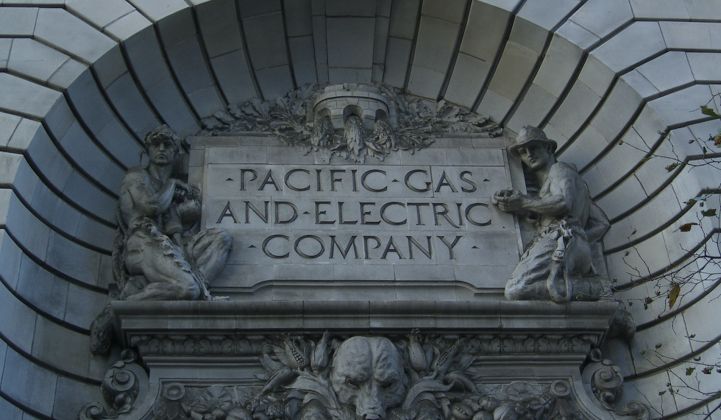Pacific Gas & Electric on Monday won court approval for its $23 billion plan to emerge from bankruptcy by midsummer, after California Gov. Gavin Newsom agreed to drop his opposition to it in the face of plunging stock markets and the economic impacts of COVID-19.
PG&E needs to emerge from bankruptcy by the end of June to access the $21 billion state wildfire insurance fund meant to protect it and other California utilities from future wildfire-driven bankruptcies.
In a Monday telephone hearing, U.S. Bankruptcy Court Judge Dennis Montali approved PG&E’s plan for $11 billion in debt commitments and $9 billion in new equity, along with $3 billion to be raised by issuing new shares. That funding will help meet the utility’s promise to pay out $25.5 billion in settlements with the wildfire victims, insurers and county and local governments damaged by the fires caused by PG&E’s equipment in 2017 and 2018.
PG&E's role in those fires, including the deadly November 2018 Camp Fire, drove it into bankruptcy early last year.
Newsom had opposed PG&E’s plan due to its reliance on debt, which he has said could leave it unable to raise the estimated $40 billion it will need to repair and modernize its grid to prevent it from causing more disastrous wildfires. But in Monday’s hearing, a representative of Newsom agreed to lift those objections, after a PG&E attorney said the plan’s passage was critical to secure its commitments from Wall Street investors in the midst of a coronavirus-induced dive in financial markets, the Associated Press reported.
Newsom can’t directly block the plan from being approved in bankruptcy court. But the state government can demand that PG&E's plan meets requirements set by the California Public Utilities Commission (CPUC) to gain access to the wildfire insurance fund.
Unsettled issues
While Newsom has lifted his opposition to the financing portion of PG&E’s plan to emerge from bankruptcy, other disputes between the utility and state government remain.
These disagreements center on demands from state lawmakers and the public for major safety improvements at a utility responsible for deadly disasters including the 2010 San Bruno gas pipeline explosion and the 2017 and 2018 fires, as well as the massive fire-prevention power outages that caused chaos in Northern California last fall and are expected to continue as a last-resort protective effort for years to come.
Newsom’s demands include replacing all 14 members of PG&E's board of directors with directors more aligned with state policy and safety goals. PG&E has said it will replace some, but not all, of its board.
Newsom has also called for a new governance structure that could allow the state to take over PG&E if it fails to meet future safety commitments. State lawmakers have introduced a bill, SB 917, that could convert PG&E into a public utility — a move that would be unprecedented in scope and could expose the state to the same risks now faced by PG&E.
Last month, along with a record $2.14 billion fine against PG&E, the CPUC issued a proposed decision that could meet many of Newsom’s key demands on this front through changes to PG&E’s financial and operational structure. Those changes would include a regional restructuring to decentralize leadership and “bring management closer to the customers,” plus the ability to adjust PG&E’s rates up or down by as much as 4 percent based on whether it achieves key safety benchmarks.
It also includes an “Enhanced Oversight and Enforcement Process,” with steps that could allow the CPUC to punish PG&E for wildfire mitigation or safety failures by demanding immediate remedial action, increasing CPUC oversight of PG&E’s activities or placing it under state receivership. As a final step, the CPUC could revoke PG&E's certification to operate as a utility in the state. While the proposal hasn’t yet been approved, it could become the framework for PG&E to meet Newsom’s accountability demands without ceding more control to the state, according to Rob Rains, an analyst with Washington Analysis.
“While onerous, we think this likely represents the outer limits of what PG&E is willing to live with to remain in private hands,” Rains wrote in a February note. “It also gives Gov. Newsom the political cover to declare to voters that a more robust system of accountability is in place.”




